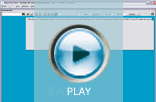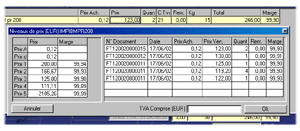 File Document
File Document File Document
File Document
Demo
1
- Document management Order |
Demo 4
- With "Easy For You", you only need 10 Clicks to create a new document. |
Demo
5
- "Easy For You" allows codes bars management |
 Getting Started - Fast encoding of a document
Getting Started - Fast encoding of a document
|
 |
|
 |
|
 |
|
|
 Inventory Control
Inventory Control
|
 Selections and filters
Selections and filters
|
 |
|
|
|
 |
 Copy a document (Example: Order (BC1) to Invoice (FT1).
Copy a document (Example: Order (BC1) to Invoice (FT1).
|
 |
|
|
 Using Packages (sets of products or text lines).
Using Packages (sets of products or text lines).
|
 Posting of the last prices.
Posting of the last prices.
|
|
|
 |
|
|
 Add text to a document
Add text to a document
|
 Open or Closed documents
Open or Closed documents
|
 Change the layout
Change the layout
|
 Payment
Payment
|
 VAT code
VAT code
|
 Back-Order management
Back-Order management
|
 The Cash-Register Tab and Menu List->Payment
The Cash-Register Tab and Menu List->Payment|
This list makes possible to see the various payments or deposit from your invoices or tickets (only CLOSED) or orders (only OPEN). This list is ordered according to the payment date a regroup by type of payment with a sub-total. This list can also recapitulate the cash movements. Example: to add the payment of an invoice in the Cash-Register: - Click the Invoices tab. - Click the right button of your mouse on the document number from the paid invoice. - In the menu payment, select the type of payment. - In the form, type the date and the Code of the payment. From now, the information concerning the payment of this invoice is visible in the Cash-Register. In the Cash-Register, click the button "Day Register" or "Monthly Register" to visualise the fill in list of your transactions. The addition of lines in the Cash-Register relates ONLY cash (no other type of payments). At the beginning, the cash amount of the "Cash-Register" is set to zero and is indicated by the first line: "Cash of the day dd/mm/yy". Each day, a new document is automatically added by the software and takes again the total cash from the previous day. If invoices or orders are paid with cash, the following day, the first line of the new document is "Cash-Register of the day dd+1/mm/yy". This will take the total of the payments carried out with cash the day before. Consequently, sometime, take time to taking away some cash. If not, your Cash-Register reach big amount. Example: to carry out some cash: - In your Tab Cash-Register, add a line such as in a usual document. - Type the Code "REG." like a product Code. - Replace the description of this line with, for example: "Taking cash away for the bank". - Encode the amount and put the quantity to -1 (Negative = taking away, positive = deposits) To daily maintain the cash total of your Cash-Register, you can, for example, input the various taking cash deposits or cash purchases like: "Cash away for restaurant" or "Cash for fuel for my car"… Do not forget: Purchases : Quantity = -1 Deposit : Quantity = 1 |